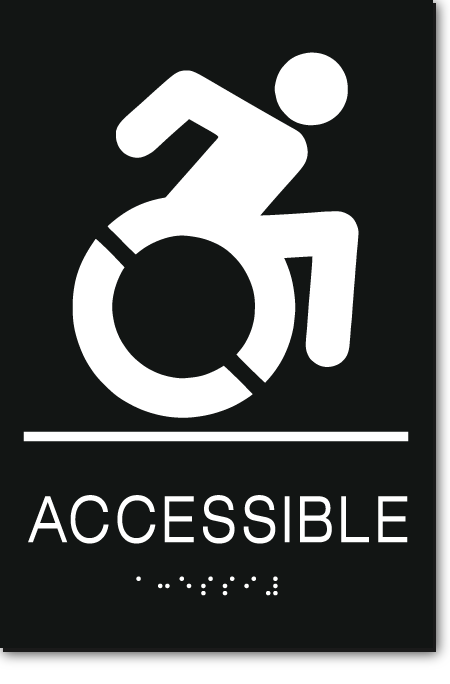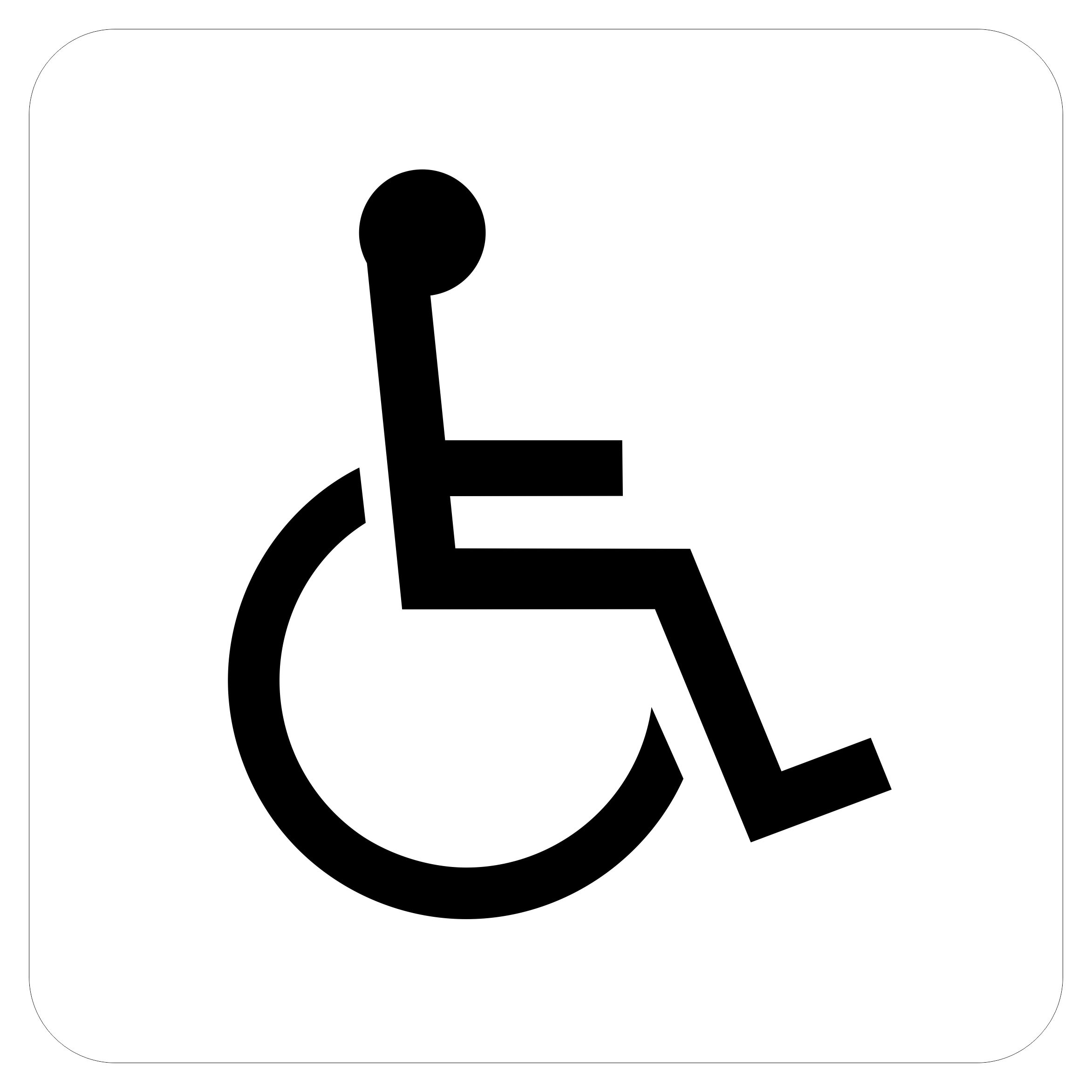Tailoring ADA Signs to Satisfy Your Details Requirements
Tailoring ADA Signs to Satisfy Your Details Requirements
Blog Article
ADA Signs: Guaranteeing Access and Compliance in Public Spaces
ADA signs plays a crucial function in assuring availability and compliance within public rooms, considerably adding to an inclusive atmosphere for people with impairments. By sticking to ADA criteria, signage not just facilitates navigating but likewise emphasizes an organization's commitment to variety and equal rights. As we explore the subtleties of ADA signs, from responsive features to create details, it's essential to think about just how these elements coalesce to maintain the civil liberties of all users. What are the usual mistakes organizations encounter in maintaining compliance, and how can future patterns in signs proceed to drive ease of access ahead?
Significance of ADA Signage
In modern society, the value of ADA signage extends past plain conformity with legal mandates to personify a dedication to inclusivity and accessibility for all people. These indicators are necessary in producing atmospheres where individuals with handicaps can browse public areas with the same ease and freedom as those without specials needs. By supplying standardized and clear information, ADA signs makes sure that everybody can access facilities, solutions, and details without barriers.
The importance of ADA signs hinges on its capability to boost the lifestyle for individuals with handicaps by advertising equal accessibility. It removes the barriers that could otherwise hinder their capacity to participate totally in neighborhood life. Moreover, these indications function as noticeable indicators of a company's dedication to variety and equal rights, showing broader social values that champion the civil liberties and dignity of all individuals.
In addition, ADA signage plays a crucial function in public safety and security. By directing people to leaves, washrooms, and various other vital facilities, it ensures that all people, no matter of physical ability, can evacuate safely during emergency situations. In recap, ADA signs is not just a governing requirement but an effective device for promoting a comprehensive and equitable culture.
Crucial Element of Conformity

Positioning is essential; indications must be set up in areas that are quickly noticeable and obtainable. Usually, signage should be placed in between 48 and 60 inches from the ground to guarantee access for both standing and wheelchair customers. Tactile elements, such as Braille, are crucial for people with visual impairments, giving essential information in a non-visual format.
High-contrast shades between the message and history are needed to boost readability for people with reduced vision. The ADA mandates particular contrast proportions to make certain clearness. Additionally, character size is a vital factor to consider, with minimum elevation requirements determined by the watching range to make sure readability from different angles.
Design Factors To Consider for Availability
Designing available signage requires a precise approach to guarantee it satisfies the needs of all customers, especially those with handicaps. This includes considering various layout aspects that enhance readability and usability. Trick aspects include the option of font, color comparison, and tactile functions. Font styles ought to be sans-serif, with clear and basic letterforms, to assist in easy reading. The dimension of the text is similarly crucial, with ADA standards recommending a minimum elevation based on checking out distance to guarantee readability.
Contrasting colors in between text and history are important for visibility, particularly for individuals with aesthetic problems. Furthermore, tactile aspects, such as Braille and raised characters, are vital for people that are blind or have reduced vision.
Furthermore, the positioning of signs plays a considerable function in ease of access. Signs should be mounted in locations that are easily obtainable and unhampered. Making sure that signs is installed at proper heights and angles makes it possible for all customers, including those using wheelchairs, to connect with them properly.
Typical Mistakes to Stay Clear Of

Another common error is the wrong positioning of signage. ADA guidelines define exact elevation and place needs to make certain that indications are reachable and quickly visible by all individuals, including those making use of wheelchairs. Neglecting these guidelines not just hinders access however additionally takes the chance of non-compliance with legal criteria.
Additionally, not enough comparison in between message and history is a frequent oversight. Ample contrast is vital for readability, specifically for individuals with low vision. Developers sometimes select shades that are aesthetically appealing however do not have the essential contrast, making the message difficult to discern.
Finally, some developers fall short to incorporate tactile components, such as Braille, which are crucial for individuals who are blind. Leaving out these attributes not just causes non-compliance with ADA regulations but likewise limits accessibility for a sector of the populace that relies on tactile information.
Future Trends in Signage
Innovations in modern technology and boosting understanding of inclusivity are forming the future fads in signage design. Digital signs, for circumstances, is developing to include interactive attributes and real-time updates, which can be crucial in giving vibrant information in public rooms.
An additional emerging trend is the application of enhanced reality (AR) site here to improve user experience. AR-enabled signage can overlay electronic info onto the physical setting, supplying aesthetically impaired people with auditory or haptic comments. ADA Signs. This innovation not just boosts accessibility yet also develops an engaging experience for all individuals
Sustainability is additionally a substantial element affecting signs trends. Eco-friendly materials and energy-efficient lights solutions are being prioritized to straighten with global ecological objectives. Developments in materials scientific research are leading to the growth of more weather-resistant and sturdy signs.
Conclusion
ADA signage plays a crucial duty in assuring ease of access and compliance within public areas by including responsive components, high-contrast shades, and tactical placement. The adherence to ADA requirements not only assists in safe navigating for individuals with disabilities yet additionally signifies an organization's dedication to diversity and inclusivity. By staying clear of usual blunders and welcoming future fads, public rooms can proceed to advance these worths, ensuring that the rights and self-respect of all people are valued and maintained.
ADA signs plays a crucial duty in ensuring availability and conformity within public areas, considerably contributing to an inclusive setting for people with impairments. As we check out the nuances of ADA signage, from tactile attributes to make details, it's critical to take into consideration just how these aspects coalesce to promote the civil liberties of all click site customers.In modern-day society, the significance of ADA signs prolongs beyond simple compliance with lawful requireds to embody a dedication to inclusivity and access for all individuals. By providing standardized and clear details, ADA signs ensures that everyone can access centers, services, and details without barriers.
ADA signs plays a crucial function in guaranteeing accessibility and compliance within public rooms by incorporating tactile components, high-contrast colors, and strategic placement. (ADA Signs)
Report this page